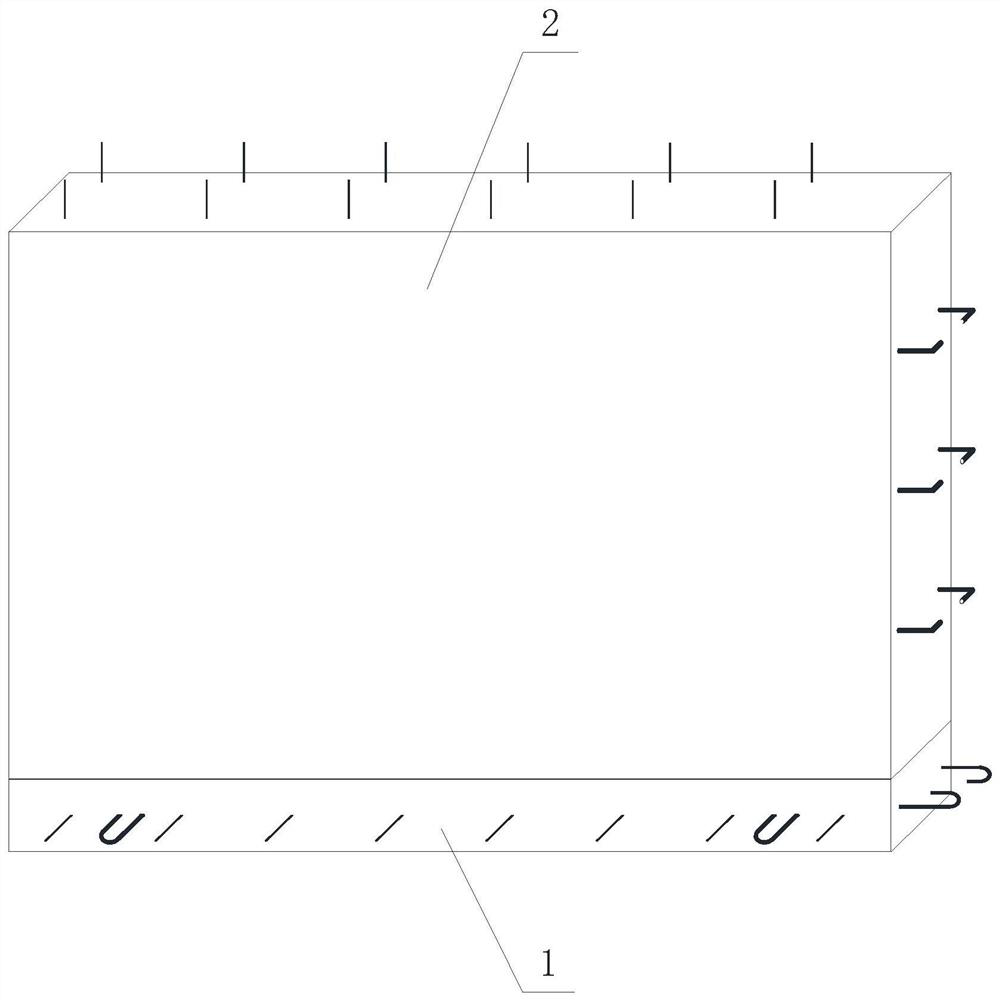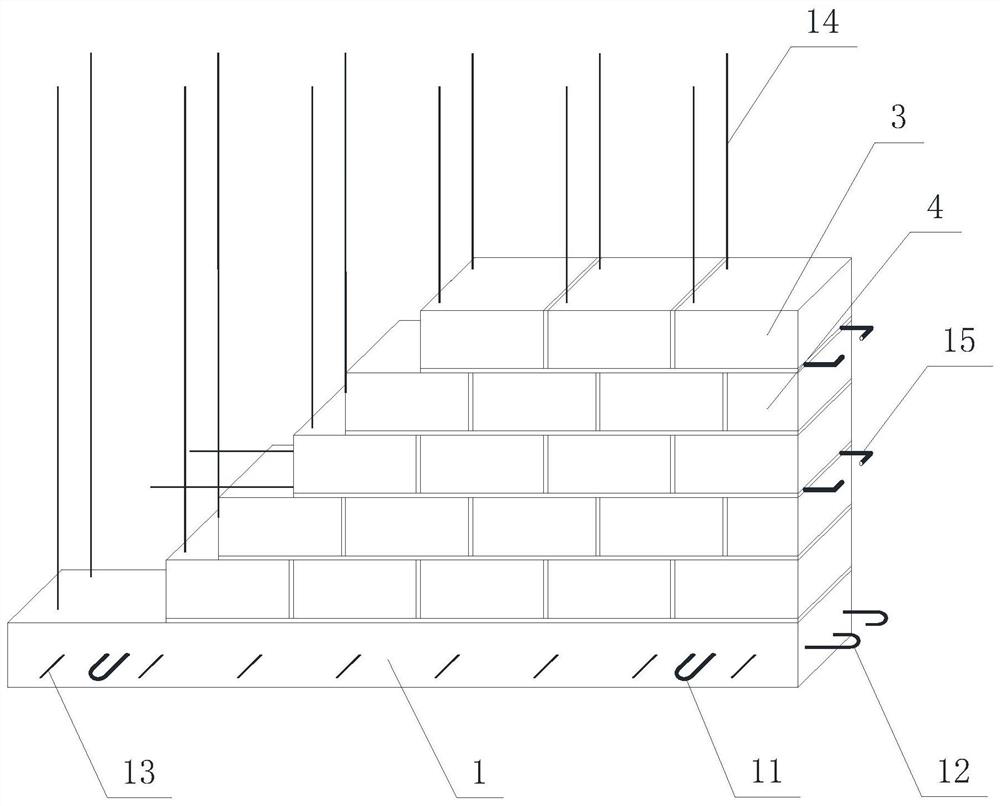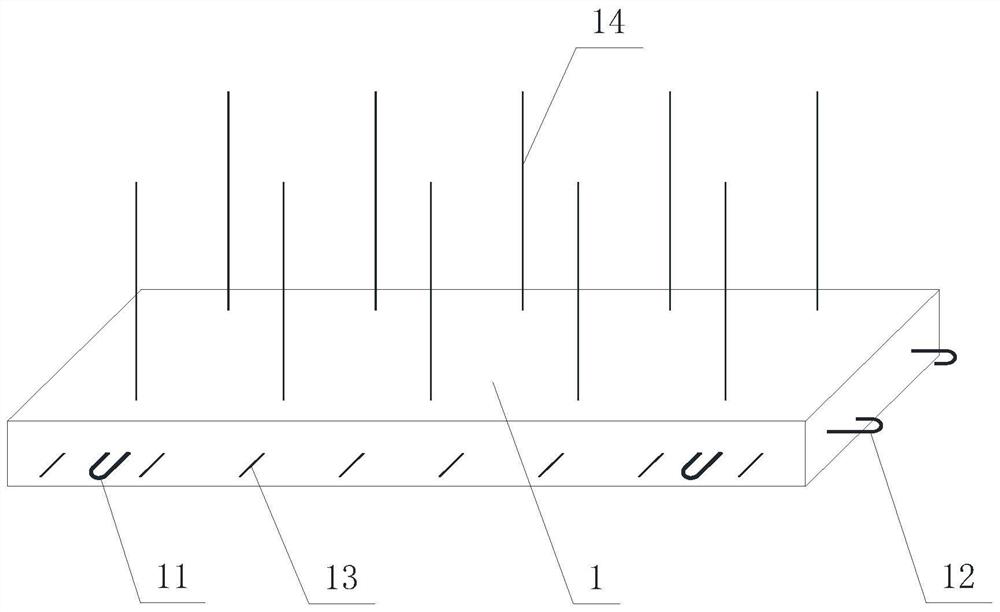Self-heat-insulation prefabricated wall
A prefabricated wall and self-insulation technology, which is applied to walls, building materials, building components, etc., can solve the problems of affecting the insulation effect and the appearance of the wall, the poor fixing effect of the insulation layer, and the falling objects are easy to hurt pedestrians, etc. Building efficiency, improving positioning accuracy and connection strength, and the effect of high overall structural strength
- Summary
- Abstract
- Description
- Claims
- Application Information
AI Technical Summary
Problems solved by technology
Method used
Image
Examples
Embodiment Construction
[0041] Embodiments of the present invention will be described in detail below in conjunction with the accompanying drawings.
[0042] refer to Figure 1 to Figure 10 , The present invention provides a self-insulating prefabricated wall, including a base 1 and a masonry fixed on the base 1, and the structures of the base and the masonry will be described in detail below.
[0043] The base 1 is used as a support carrier and is made of concrete pouring. The length of the base (left and right direction) is 1.5m-3.5mm, the width (front and rear direction) is 15-30cm, and the height (vertical direction) is 8cm-20cm. 1 is provided with a steel bar support, and the steel bar support includes a third steel bar 11 parallel to the width direction of the base 1, a fourth steel bar 12 parallel to the length direction of the base 1, and a fifth steel bar 13 parallel to the third steel bar 11, the third steel bar 11 are at least two and arranged symmetrically left and right, the fourth stee...
PUM
 Login to View More
Login to View More Abstract
Description
Claims
Application Information
 Login to View More
Login to View More - R&D
- Intellectual Property
- Life Sciences
- Materials
- Tech Scout
- Unparalleled Data Quality
- Higher Quality Content
- 60% Fewer Hallucinations
Browse by: Latest US Patents, China's latest patents, Technical Efficacy Thesaurus, Application Domain, Technology Topic, Popular Technical Reports.
© 2025 PatSnap. All rights reserved.Legal|Privacy policy|Modern Slavery Act Transparency Statement|Sitemap|About US| Contact US: help@patsnap.com



